20 Common Backyard Birds in Indiana (With Pictures)
Last Updated on
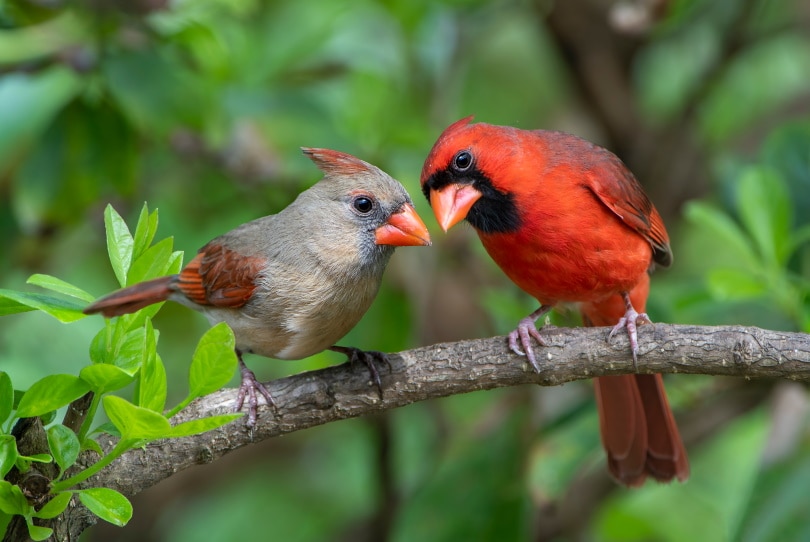
Indiana is home to dozens of winged critters and isn’t a place that should be overlooked for birdwatching enthusiasts. The state is just at the base of Lake Michigan where the Indiana National Park boasts some special wildlife, so birds will vary depending on the location. If you’re a resident of Indiana or just stopping by, this list is essential and something you won’t want to miss.
Today, we’ll cover 20 common backyard birds in Indiana in addition to some images to illustrate their beautiful colors, shapes, and sizes.

The 20 Common Backyard Birds in Indiana (With Pictures)
1. Blue Jay
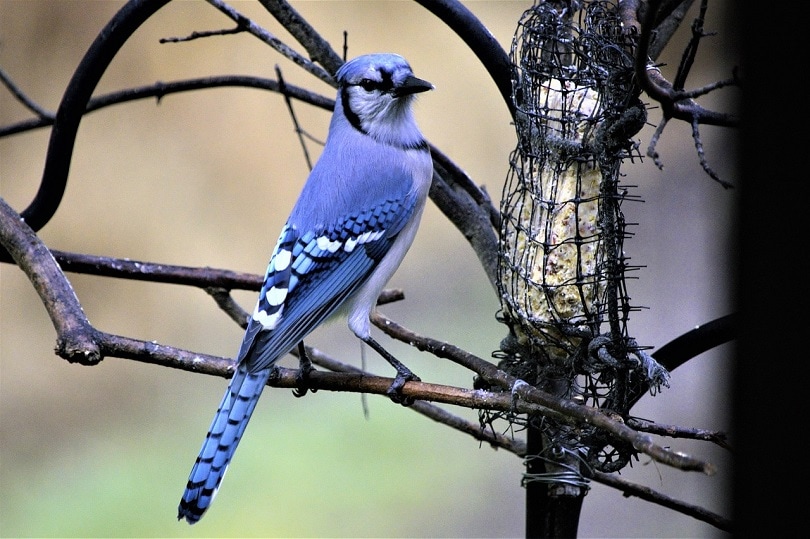
| Scientific name | Cyanocitta cristata |
| Family | Corvidae |
Spanning over half the contiguous US, the Blue Jay is one of the most eye-catching birds in the East, and Indiana is home to this species year-round. They love to eat just about anything they can get their beaks on like fish, worms, berries, and much more.
Jays primarily nest in trees, so that’s the best place to look if you want to see one for yourself. They are a member of the Corvidae family, so they are sizable and hefty compared to others on this list.
2. Northern Cardinal
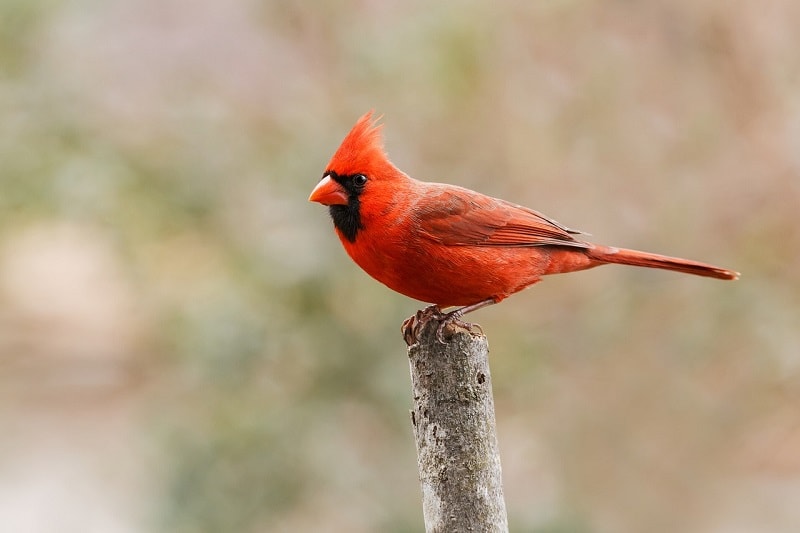
| Scientific name | Cardinalis cardinalis |
| Family | Cardinalidae |
As the state bird of Indiana, we couldn’t miss it on this list. The Northern Cardinal has striking red colors across its body, boasting a brilliant, crimson crest on its head. Male cardinals are exceptionally saturated in their tones, while females may have a more brownish color mixed with the reds in between. You can spot them easily from afar, and they can be seen visiting feeders due to their love for seeds. One thing is for sure, though, they are one of the most common red birds in Indiana.
3. Red-Breasted Nuthatch
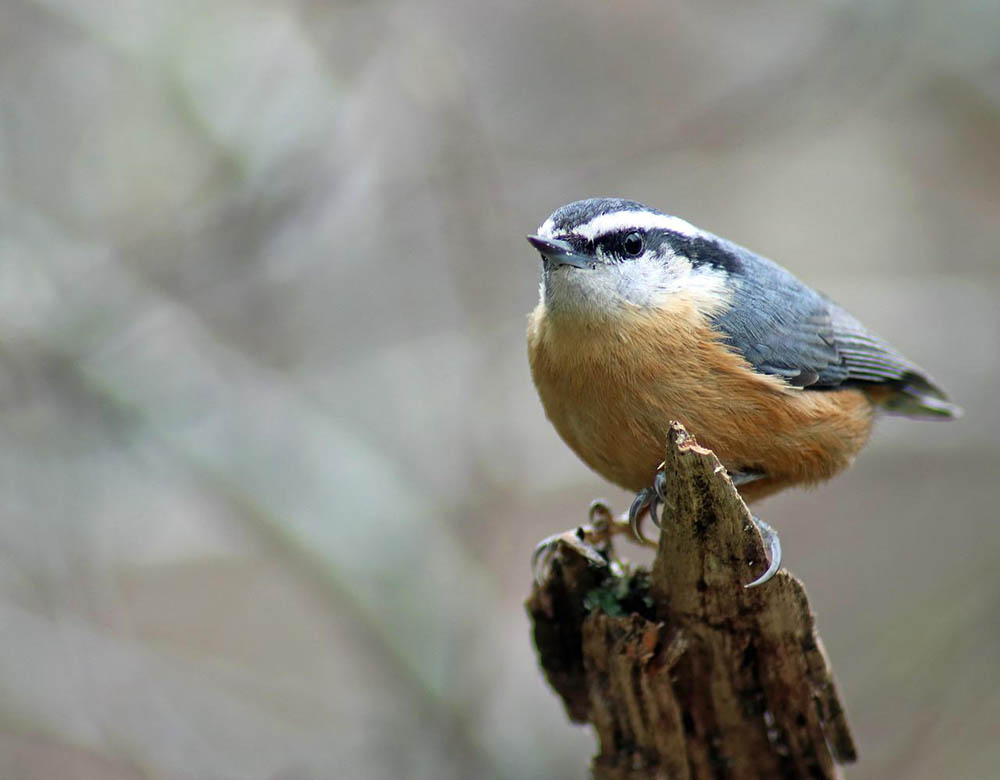
| Scientific name | Sitta canadensis |
| Family | PaSittidae |
Red-Breasted Nuthatches are a variation of the nuthatch with a brownish-red color on their underside. This species primarily gets their grub by searching the bark of trees for insects with their long bill. They are energetic birds, but in Indiana, you’ll only be able to see them during non-breeding periods. The Red-Breasted Nuthatch builds its nest in tree cavities to stay protected.
4. White-Breasted Nuthatch

| Scientific name | Sitta carolinensis |
| Family | Sittidae |
White-Breasted Nuthatches look similar to the Black-Capped Chickadees, and they even fly together among the trees. Similar to its red variant, this species is quite active as they both forage and shelter in the same fashion. The only differences you’ll find are the color and the fact these Indiana songbirds are found throughout the entire year across the entire state.
5. Black-Capped Chickadee
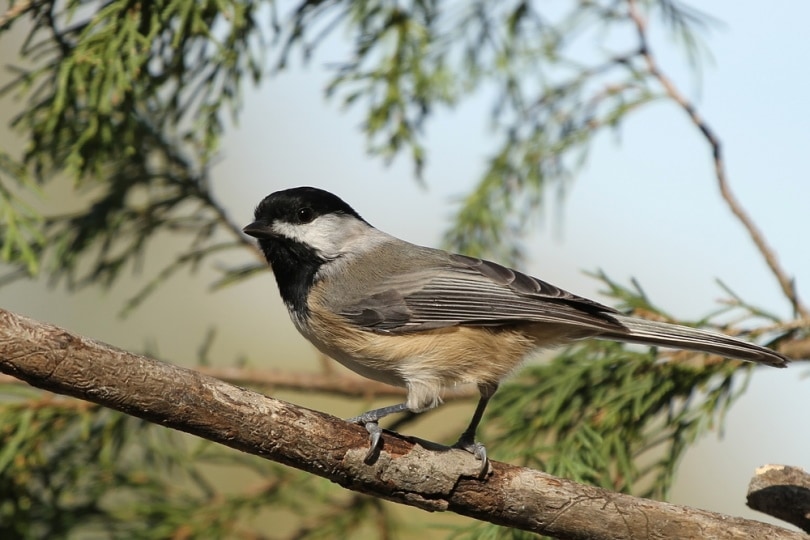
| Scientific name | Poecile atricapillus |
| Family | Paridae |
One of the most common birds you’ll find at the feeder in the Central and Eastern United States is the Black-Capped Chickadee. These little birds have a call that you’ve probably heard before. Their famous “chickadee-dee-dee” is a pleasant sound that is one of the easiest to distinguish.
In the wild, chickadees primarily have a carnivorous diet of bugs that they search for under leaves, but if you put out some seeds, they won’t be able to resist.
6. Yellow Warbler

| Scientific name | Setophaga petechia |
| Family | Parulidae |
The Yellow Warbler is found in Indiana only during breeding periods, but when they are around, they mostly forage for insects that chew on leaves. Male warblers are generally much more vibrant in their yellow hue, whereas immature birds or female counterparts have a paler complexion
. They live in open woodlands, so it’s best to search on trails with meadow openings to find them. If you want to attract them to the feeder, you’ll need to try using mealworms for the best chance.
7. Brown Creeper

| Scientific name | Certhia americana |
| Family | Certhiidae |
The Brown Creeper has a name that might sound provoking, despite their small stature. They’re not exactly creepy, as their distinction is that they live in tall, thick trees, and some biologists even use them as a measure of how much deforestation has affected an area due to this commonality.
Since they live up in the canopy, they mainly eat insects that can be found under loose bark. On the East and West Coasts they stay for the whole year, but Indiana residents will only be able to see them outside of their mating times.
8. Brown Thrasher
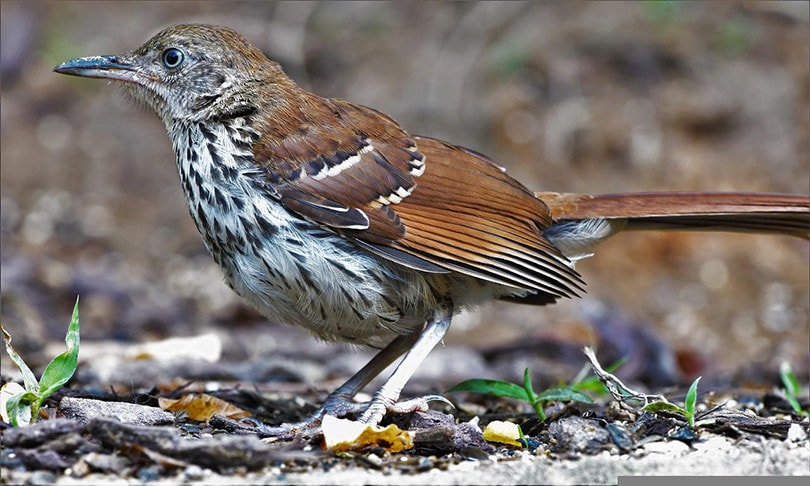
| Scientific name | Toxostoma rufum |
| Family | Mimidae |
These brown birds in Indiana are the Brown Thrasher, which have extended tails, long bills, and stern gazes. The southern area of Indiana has year-round appearances for this species, but otherwise, they’ll only be present to breed. They stay closer to the ground for their daily activities, as they nest in shrubs and forage the ground for a wide variety of foods like seeds, insects, vegetation, and fish.
9. House Finch
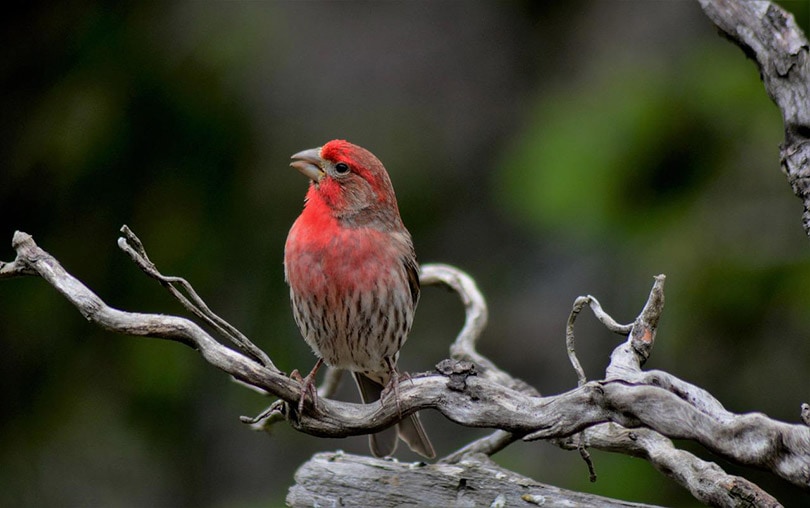
| Scientific name | Setophaga tigrina |
| Family | Parulidae |
A common sight at the feeder is the House Finch. As the name suggests, the species is not shy around humans, and they are a frequent flier in towns and cities across Indiana (and the country for that matter). Females have a brownish-gray body, but males have a red breast and cap. You shouldn’t have a problem seeing them on your front porch or backyard if you’ve set up a feeder since they are quite fond of seeds.
10. American Goldfinch
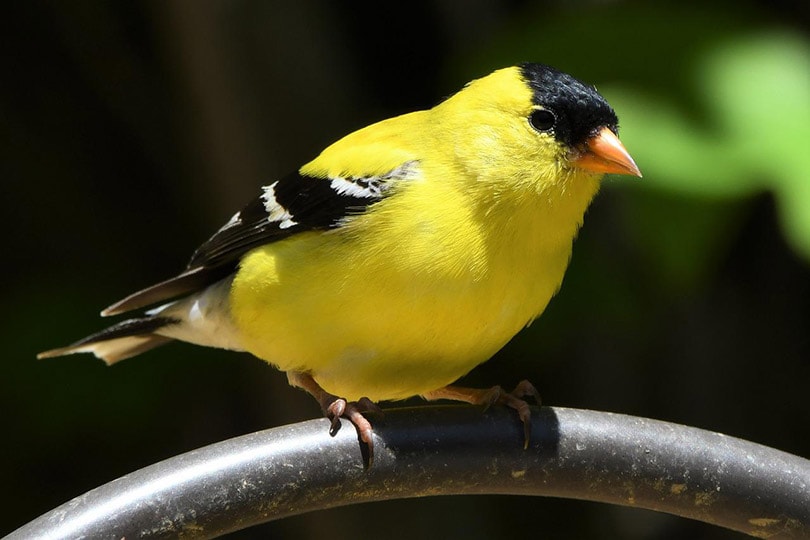
| Scientific name | Spinus tristus |
| Family | Fringillidae |
An American Goldfinch’s plumage consists mostly of yellow and black. They aren’t afraid of feeders and are relatively easy to attract since they are drawn to sunflower seeds or the like. It’s difficult to see them in their nests because they hide out in thick shrubs or bushes to keep a low profile. However, if you have these plants in your yard, you will likely have them as a neighbor.
11. Field Sparrow
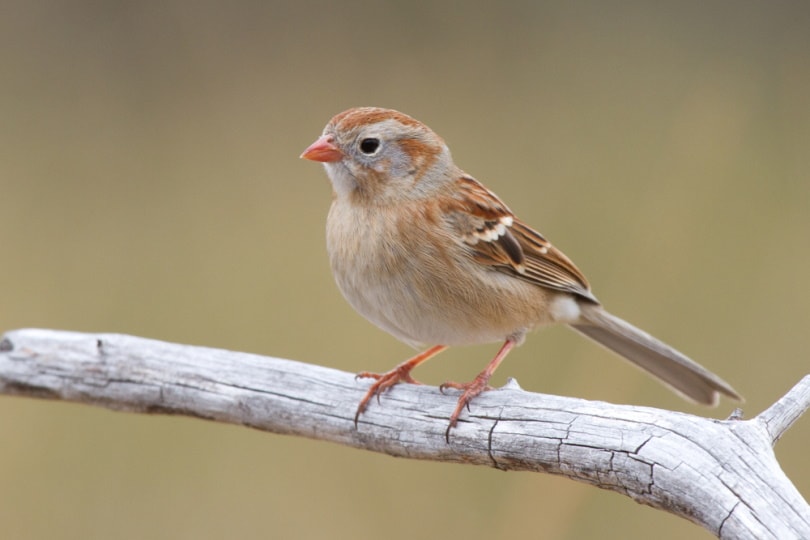
| Scientific name | Spizella pusilla |
| Family | Passerellidae |
Although they are found all year in most eastern states, the Field Sparrow is a bird in decline because of construction and buildings taking over their habitat. Their natural habitat is in low-lying vegetation like bushes or shrubs. Field Sparrows live in Indiana most of the year, even toughing through the winter if they see fit, but it’s better to look for them at sunrise during warmer months.
12. American Tree Sparrow

| Scientific name | Spizelloides arborea |
| Family | Passerellidae |
The next sparrow on this list is the American Tree Sparrow, which has a brown body similar to the Field Sparrow. This species is also in decline due to habitat loss, so you’ll only be able to find them in non-breeding seasons in places with less human interference. However, they do enjoy seeds and can be a common bird at the feeder if you make food available to them. They tend to make their homes on the ground where they can easily search for fallen seeds.
13. Red-Bellied Woodpecker
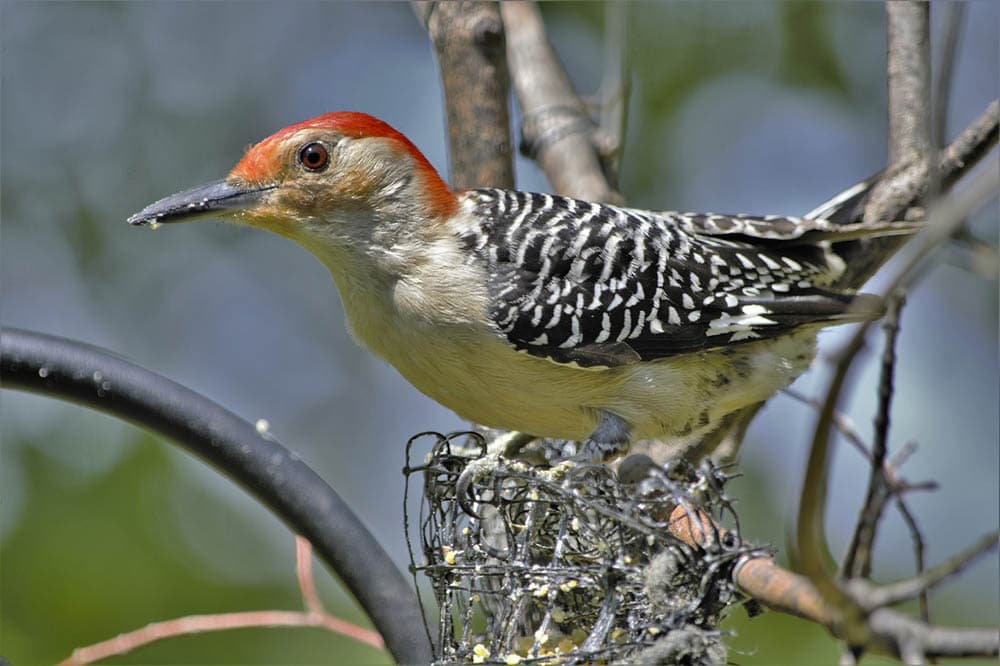
| Scientific name | Melanerpes carolinus |
| Family | Picidae |
Many types of woodpeckers have red caps, as the Red-Bellied Woodpecker does, but this species also has a reddish-orange stomach and breast, making it a standout feature from the rest. The checkerboard-like pattern on its back is also an exciting trait that they boast, and you’ll most likely hear them before you see them. They drill away at trees with their long bills to gather insects hiding behind the bark. As a woodpecker, they love to nest in tree cavities for protection.
14. American Robin
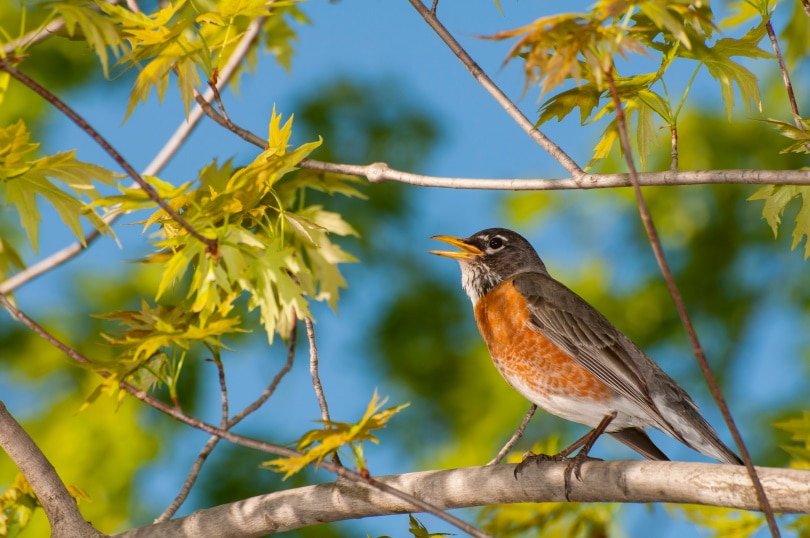
| Scientific name | Turdus migratorius |
| Family | Turdidae |
It would be difficult to travel through any of the lower 48 states and not find yourself a handful of robins while in a city or town. The American Robin is so prevalent that it can be found from the top of Alaska’s Arctic region all the way down to Central America. They’re iconic birds of North America with orange, gray, and black bodies.
Scavenging is predominantly done on the roads or forest openings where they can feed on their favorite insects, but they are sure to visit a feeder if they feel so inclined.
15. Red-Winged Blackbird
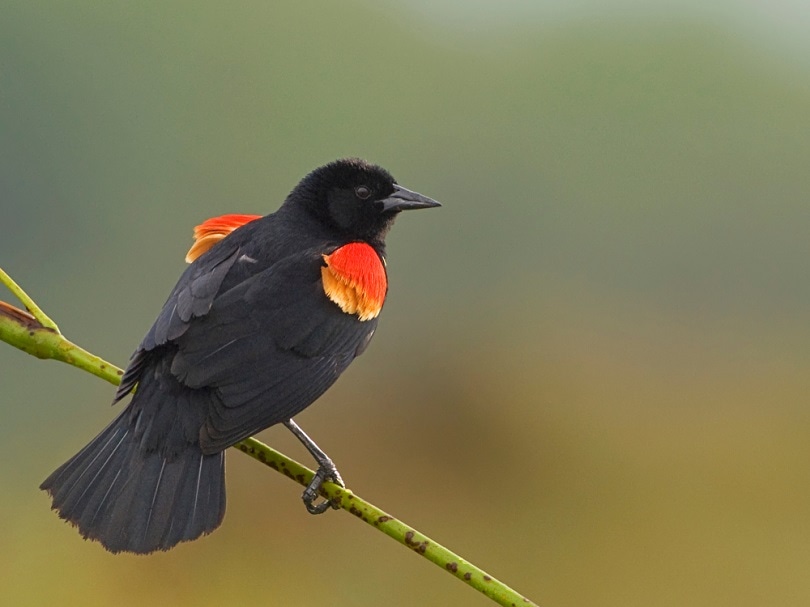
| Scientific name | Agelaius phoeniceus |
| Family | Icteridae |
Living near wetlands and pond basins is the Red-Winged Blackbird. As per its name, the red wing of the male blackbird is prominent with a yellow accent underneath. On the other hand, females of this species look like entirely different birds, as they are covered in a brown and white pattern. They do have red wings though, so distinguishing the genders should be fairly easy.
Red-Winged Blackbirds primarily nest and forage for insects on the ground because there aren’t as many trees in their marshy habitat.
16. Downy Woodpecker
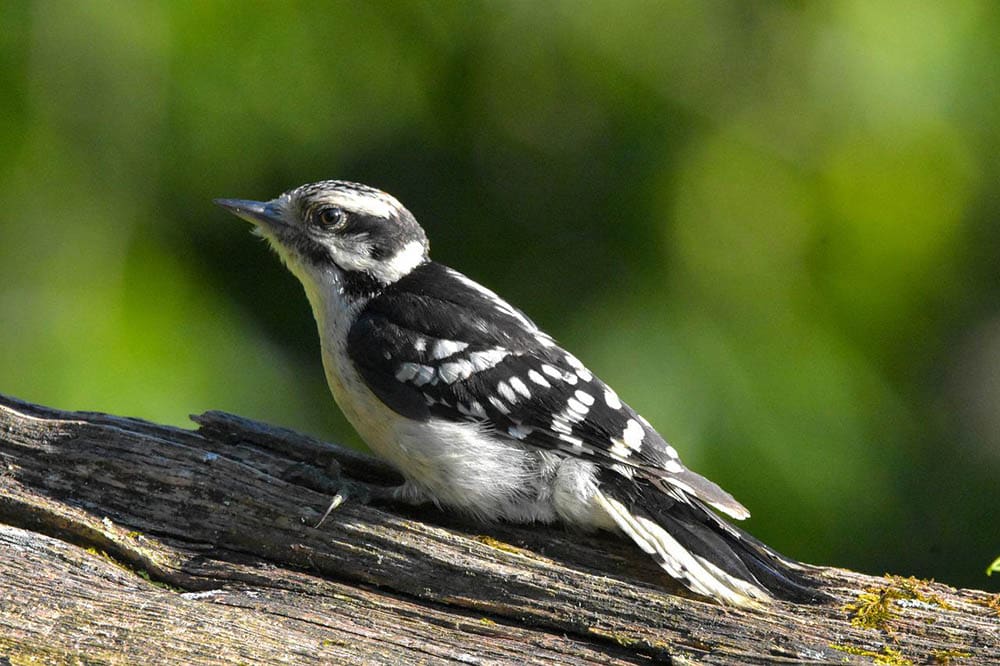
| Scientific name | Setophaga tigrina |
| Family | Picidae |
This species of woodpecker may be the most common of all, with a black and white plumage across its entire body and an orange-red cap on its head. They can be found anywhere in the state during all seasons, and you’ll likely hear them knocking on tree trunks before you even see them. Like other woodpeckers, their diet consists of insects that they can swipe off of tree bark, like ants or beetles. The Downy Woodpecker may even flock with slightly smaller birds by nature.
17. American Crow
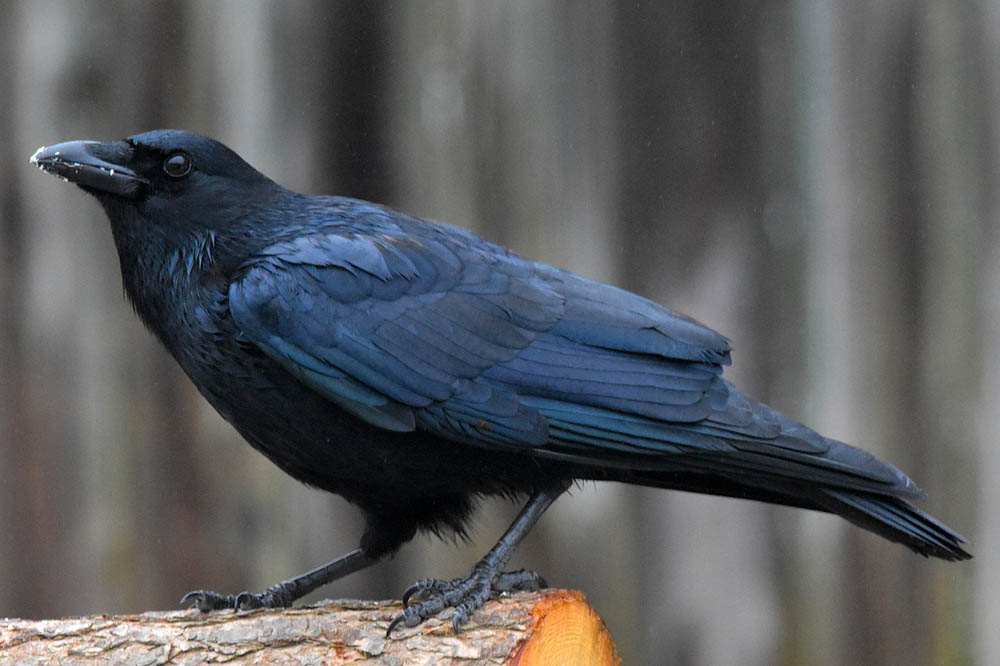
| Scientific name | Corvus brachyrhynchos |
| Family | Corvidae |
An unavoidable bird across the country in all climates, the American Crow is famed for its jet black feathers and gloomy personas. They scavenge just about every street for roadkill or anything else they can find. You’ll commonly see them in the trees, nesting and scouting their scene.
Due to their larger size, they probably won’t attempt any feeder flybys, but don’t confuse them with Common Ravens, which are much more massive.
18. Northern Flicker
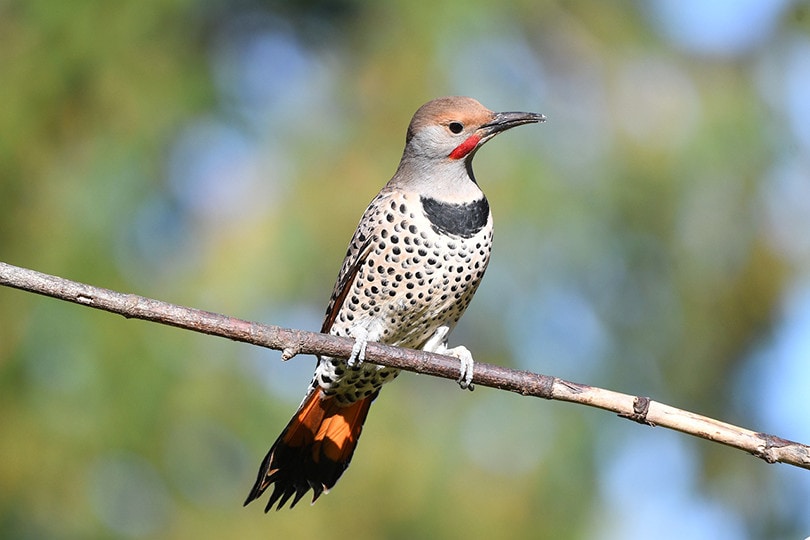
| Scientific name | Colaptes auratus |
| Family | Picidae |
The Northern Flicker is plentiful across North America, breeding in the Alaskan and Canadian wilderness while also living in the contiguous US year-round. Their black-dotted breasts and underbellies are complemented by a flurry of other colors, including intriguing red accents that are close to the bill. Their main diet is insects, which they collect off the ground.
19. Hermit Thrush
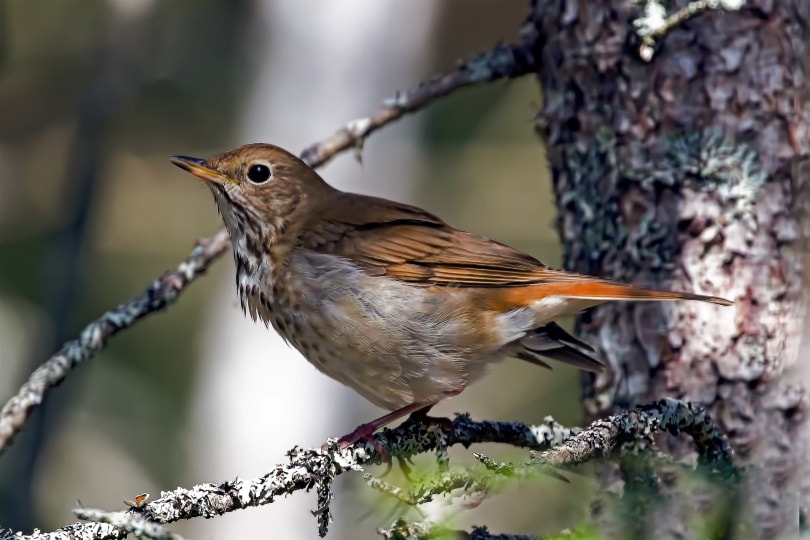
| Scientific name | Catharus guttatus |
| Family | Turdidae |
As a small brown bird in Indiana, the Hermit Thrush tends to stay low to the ground and forage for bugs. They generally don’t come to feeders very often, but if you have berry bushes and lots of ants, they’ll frequently make visits to your backyard. In the Hoosier State, you’ll be able to see them migrating in most of the area, but in the South near Kentucky, they can be seen during non-breeding periods.
20. Cape May Warbler
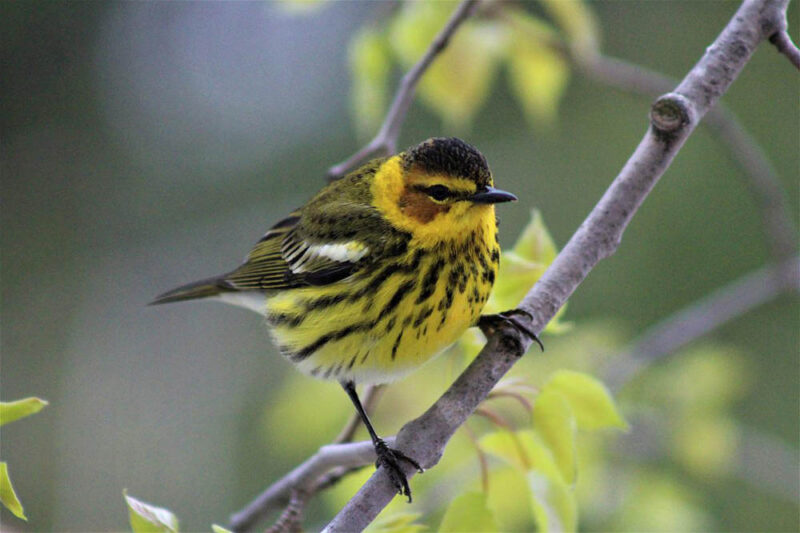
| Scientific name | Setophaga tigrina |
| Family | Parulidae |
Our last Indiana bird is a yellow-colored warbler called the Cape May Warbler. They’re decreasing in population, but you can find them in this state when they are migrating. To separate males from females, you’ll want to look at the eye area—the males have a moderately red accent here.
Cape May Warblers enjoy feeding on insects and small bugs close to their tree nests. During mating season, they are keen on eating Spruce Budworm Caterpillars hiding under leaves.

Conclusion
Indiana isn’t a state to skimp on when it comes to birding, and these 20 common birds are visible from your backyard if the environment is right. There are plenty more species out there, but we hope your identification skills will improve after a quick look through our list. Don’t forget to keep your feeder filled and enjoy the relaxing songs of all of your favorite backyard birds!
Featured Image Credit By Bonnie Taylor Barry, Shutterstock
Table of Contents
- The 20 Common Backyard Birds in Indiana (With Pictures)
- 1. Blue Jay
- 2. Northern Cardinal
- 3. Red-Breasted Nuthatch
- 4. White-Breasted Nuthatch
- 5. Black-Capped Chickadee
- 6. Yellow Warbler
- 7. Brown Creeper
- 8. Brown Thrasher
- 9. House Finch
- 10. American Goldfinch
- 11. Field Sparrow
- 12. American Tree Sparrow
- 13. Red-Bellied Woodpecker
- 14. American Robin
- 15. Red-Winged Blackbird
- 16. Downy Woodpecker
- 17. American Crow
- 18. Northern Flicker
- 19. Hermit Thrush
- 20. Cape May Warbler
- Conclusion
About the Author Robert Sparks
Robert’s obsession with all things optical started early in life, when his optician father would bring home prototypes for Robert to play with. Nowadays, Robert is dedicated to helping others find the right optics for their needs. His hobbies include astronomy, astrophysics, and model building. Originally from Newark, NJ, he resides in Santa Fe, New Mexico, where the nighttime skies are filled with glittering stars.
Related Articles:
Monocular vs Telescope: Differences Explained (With Pictures)
10 Types of Hummingbirds in Arkansas (With Pictures)
8 Types of Hummingbirds in Nebraska (With Pictures)
5 Types of Hummingbirds in Idaho (With Pictures)
3 Types of Hummingbirds in Mississippi (With Pictures)
8 Types of Hummingbirds in Kansas (With Pictures)
5 Types of Hummingbirds in West Virginia (With Pictures)
5 Types of Hummingbirds in Ohio (With Pictures)
